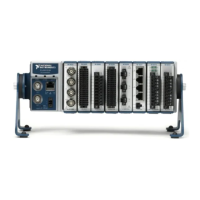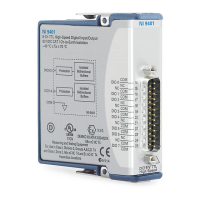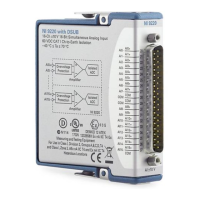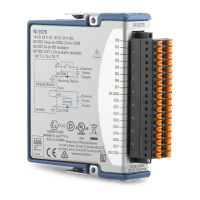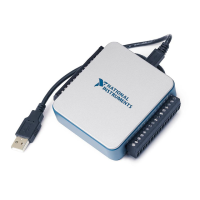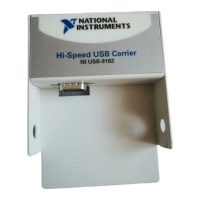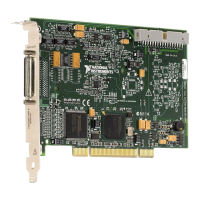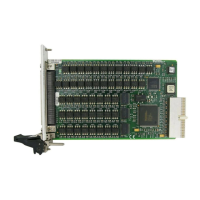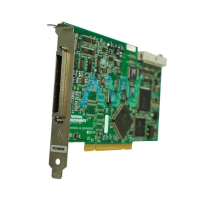Chapter 4 Analog Input
© National Instruments 4-7 X Series User Manual
NI-PGIA to amplify the input signal to the desired accuracy before it is
sampled by the ADC. The specifications document for your DAQ device
lists its settling time.
MIO X Series devices are designed to have fast settling times. However,
several factors can increase the settling time which decreases the accuracy
of your measurements. To ensure fast settling times, you shou ld do the
following (in order of importance):
1. Use Low Impedance Sources—To ensure fast settling times, your
signal sources should have an impedance of <1 kΩ. Large source
impedances increase the settling time of the NI-PGIA, and so decrease
the accuracy at fast scanning rates.
Settling times increase when scanning high-impedance signals due to
a phenomenon called charge injection. Multiplexers contain switches,
usually made of switched capacitors. When one of the channels, for
example channel 0, is selected in a multiplexer, those capacitors
accumulate charge. When the next channel, for example channel 1, is
selected, the accumulated charge leaks backward through channel 1. If
the output impedance of the source connected to channel 1 is high
enough, the resulting reading of channel 1 can be partially affected by
the voltage on channel 0. This effect is referred to as ghosting.
If your source impedance is high, you can decrease the scan rate to
allow the NI-PGIA more time to settle. Another option is to use a
v
oltage follower
circuit external to your DAQ device to decrease the
impedance seen by the DAQ device. Refer to the KnowledgeBase
document, Decreasing the Source Impedance of an Analog Input
Signal, by going to
ni.com/info and entering the Info Code
rdbbis.
2. Use Short High-Quality Cabling—Using short high-quality cables
can minimize several effects that degrade accuracy inclu ding crosstalk,
transmission line effects, and noise. The capacitance of the cable also
can increase the settling time.
National Instruments recommends using individually shielded,
twisted-pair wires that are 2 m or less to connect AI signals to the
device. Refer to the Connecting Analog Input Signals section for more
information.
3. Carefully Choose the Channel Scanning Order
• Avoid Switching from a Large to a Small Input
Range—Switching from a channel with a large input range to a
channel with a small input range can greatly increase the settling
time.
Artisan Technology Group - Quality Instrumentation ... Guaranteed | (888) 88-SOURCE | www.artisantg.com
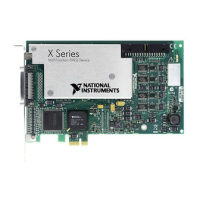
